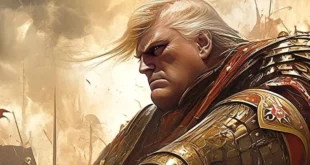CBS
November 4, 2013
What citizen fed up with the doings in their state capital hasn’t daydreamed of living in a state of their own? Turns out, some of our nation’s discontented have been doing a lot more than daydreaming. Our Cover Story is reported by Barry Petersen:
The map says this is northern California, so mapmakers and visitors might be a bit confused about a sign claiming this is the State of Jefferson.
“The State of Jefferson, as originally envisioned, would be the same size as, say, New Mexico,” said Geri Byrne, Chairman of the Modoc County Board of Supervisors, which passed a resolution in September to leave California and help form the State of Jefferson. “It would be, like, the 44th largest state, and the 44th largest by population, too.”
A newspaper poll in Siskiyou County next door showed overwhelming support after that county’s board also voted to leave California: 66 percent for secession, 22 percent against, 11 percent not sure.
And the sentiment is spreading to other counties across northern California.
It is fed by anger across rural America . . . a mood of us-against-them, against big cities that increasingly dominate state legislatures, passing laws some say ignore rural needs.
Bryne said that regulations on agriculture and timber harvesting have a direct impact on their community. “Our local economies in rural California are basically dependent on ranching, farming, timber, hunting, fishing. And every time, you know, we make bureaucratic decisions that impact that, we destroy the economies of northern — the North State.”
This isn’t their first try. The people in northern California and southern Oregon tried breaking away once before, in 1941, even setting up roadblocks on the borders of a State of Jefferson. It fizzled out with the beginning of World War II.
And it turns out that breaking away from one state to form a new one is as old as the United States, beginning in 1776 when the colony of Delaware broke from Pennsylvania. Maine was once part of Massachusetts. West Virginia and Kentucky were once part of Virginia, and Tennessee was a breakaway from North Carolina.
And, of course, much of the South seceded and called itself a separate country, until it was defeated in the Civil War.
“Secession is with us, a tradition almost like Thanksgiving — well, except Thanksgiving stays and secession comes and goes,” said Douglas Brinkley, a professor of history at Rice University and a CBS News contributor. He says the founding fathers made sure rural America was listened to, starting with the way we choose a president.
“That’s why we have an Electoral College system, that we don’t forget rural people,” Brinkley said. “That system of having two senators from every state, regardless of population, is a gesture — a big one — to rural populations that they are being listened to.”
Listened to or not, these modern-day movements are popping up from Maryland to the upper peninsula of Michigan to northern Colorado.
 Daily Stormer The Most Censored Publication in History
Daily Stormer The Most Censored Publication in History


